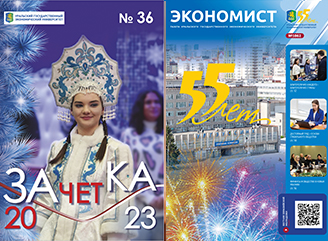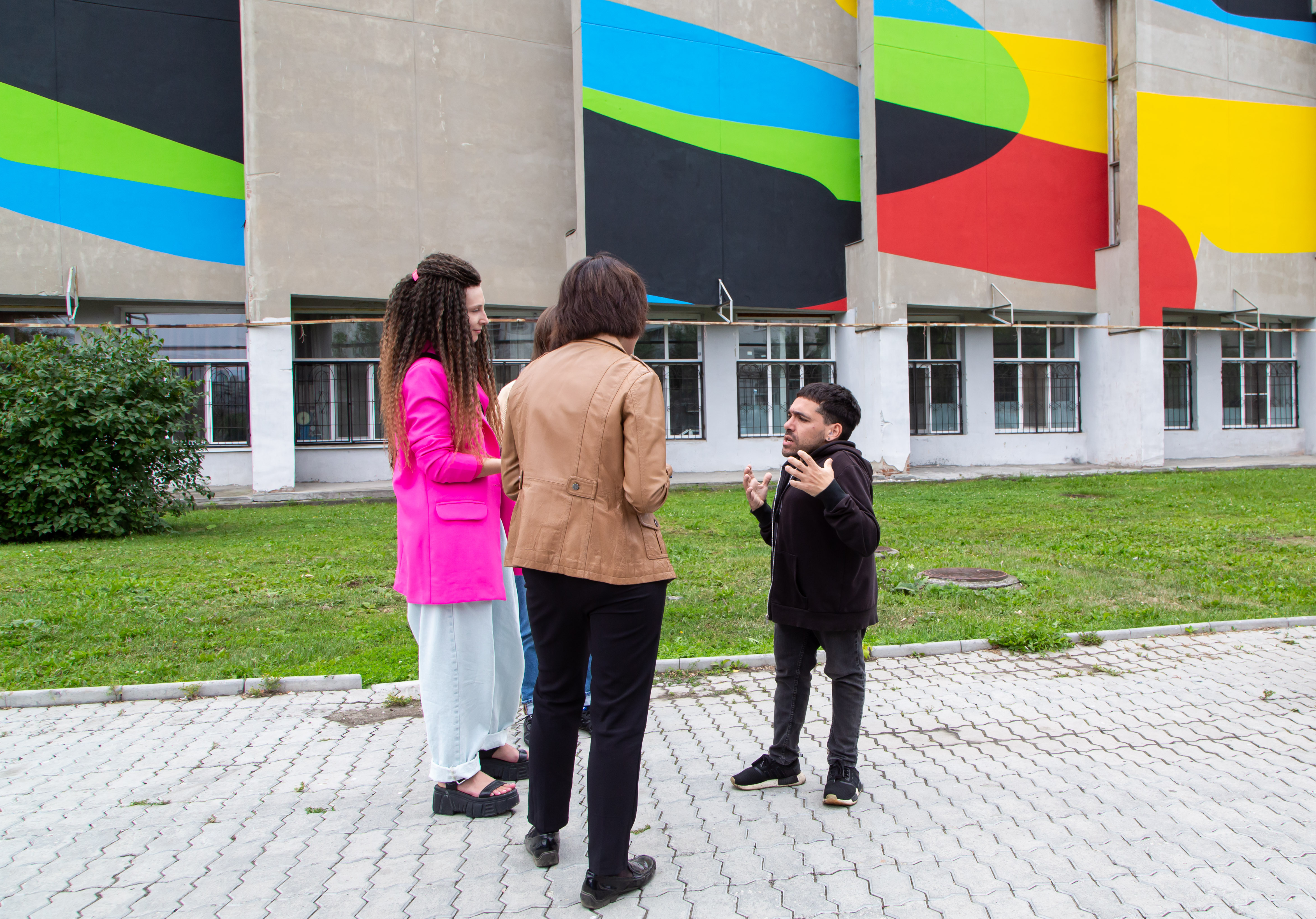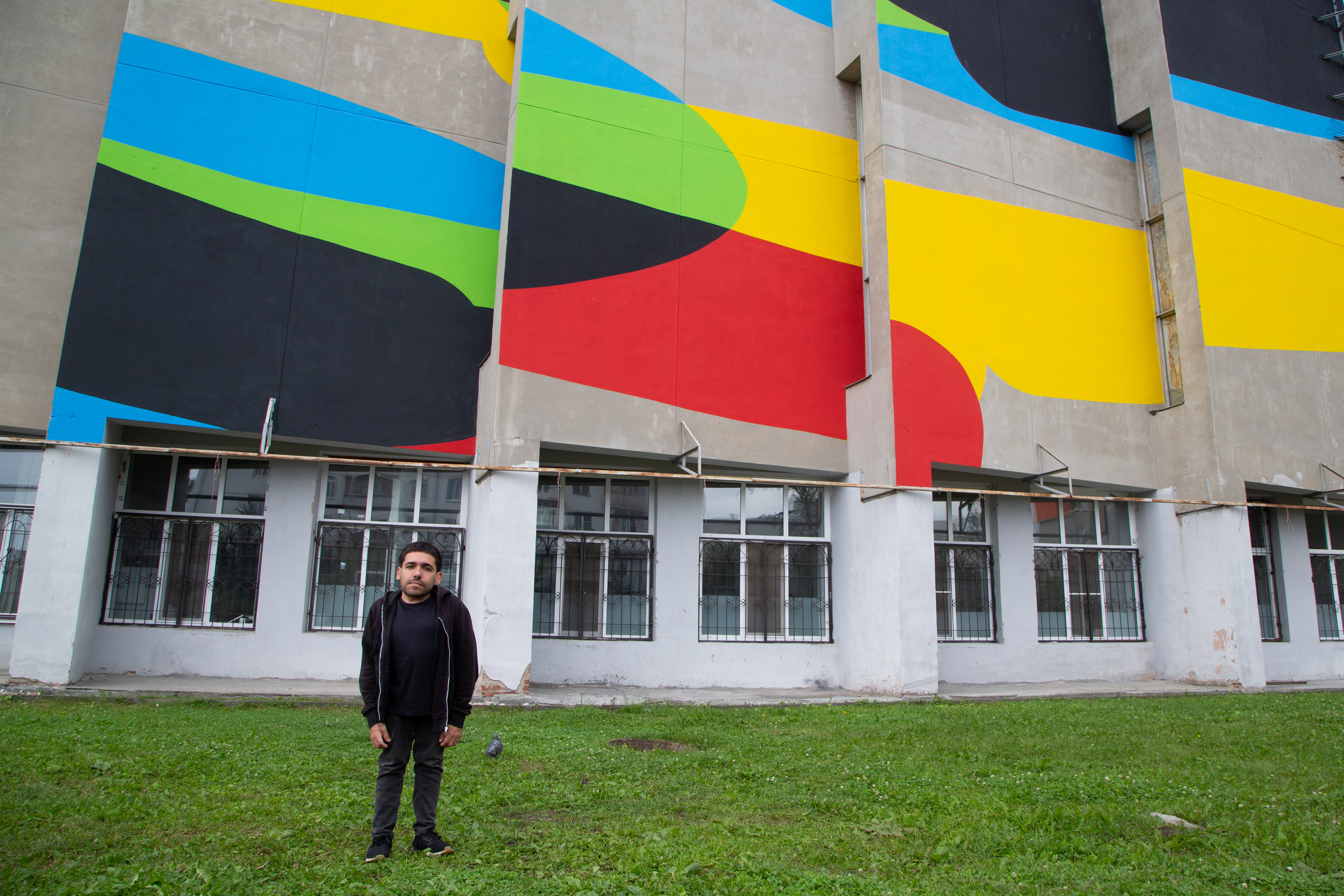 See other releases of corporate mass media
See other releases of corporate mass media
Elian Chali: A city is the best place for dialogue witch people
In July, the famous street art festival STENOGRAFFIA took place in Yekaterinburg. Many bright art objects adorned Yekaterinburg, and one of the facades of USUE was a site for the work of Argentinean artist Elian Chali. The mural is called “Colored talismans and old-new spells.” It became the first large-scale work of the artist after the pandemic. The editorial staff of Zachetka student magazine met with Elian Chali to talk about street art, favorite projects, and the striking architecture of Yekaterinburg.
1. Elian, how did you become a street art artist? Why did you choose this from all art movements?
I started painting graffiti about 15 years ago, and after two years, I took part in festivals. I became interested in street art and truly loved it. I like its publicity, and for me, the most important thing is to make my work publicly available. I believe that a city is the best place for dialogue with people.

2. Your works are full of color and they stand in stark contrast to the urban space. What inspires you to create such bright art objects?
Usually, all cities are grey, and in this, they are similar to each other. I like to use bright colors, geometry, and abstraction because they create a strong contrast to the urban space. Without fear or favor, the university wall is overlarge, just like the drawing on it. But talking of the entire building and the urban space as a whole, this is only a little bright spot, and that is why it stands out so much. It is an accent. After all, if all cities become completely colorful, how will this differ from their current dullness? As for inspiration by the creative works of any specific artists, here I can say that I have no heroes. My friends are my real heroes.
3. In your opinion, how can street art help in urban improvement? Can objet d’art be used to transform problem areas into attractive and safe spaces for citizens?
I do not define street art as an obligatory part of the beautification of a location. Through my work, I, first of all, ask questions to townspeople and invite them to dialogue. If you want to globally change the urban space, turn the ghetto into an attractive area, you need to do something else. The improvement of a city is achieved through social and cultural programs, which are implemented by the government, not artists. I do art. My works are a small gift to a city and its inhabitants. I am responsible only for this.

4. Would you tell us about your significant projects? What works are your favorite and most valuable?
I love every work I do; however, I can mention a project I did in Kaohsiung, Taiwan, about two years ago, before the pandemic. It was a good experience; I liked both the country and its people. When we finished the work, everyone was happy and satisfied with the result. I did establish close contact with people and it was great!
Each wall is a new challenge for me. If you work with a good team and get its support, then you can implement any ideas. At STENOGRAFFIA, we worked in a team of 5-6 persons for several days, from morning to night. But we allocated resources properly and coped with the task.














